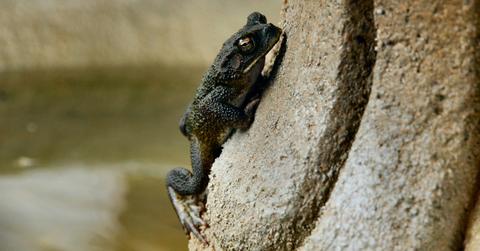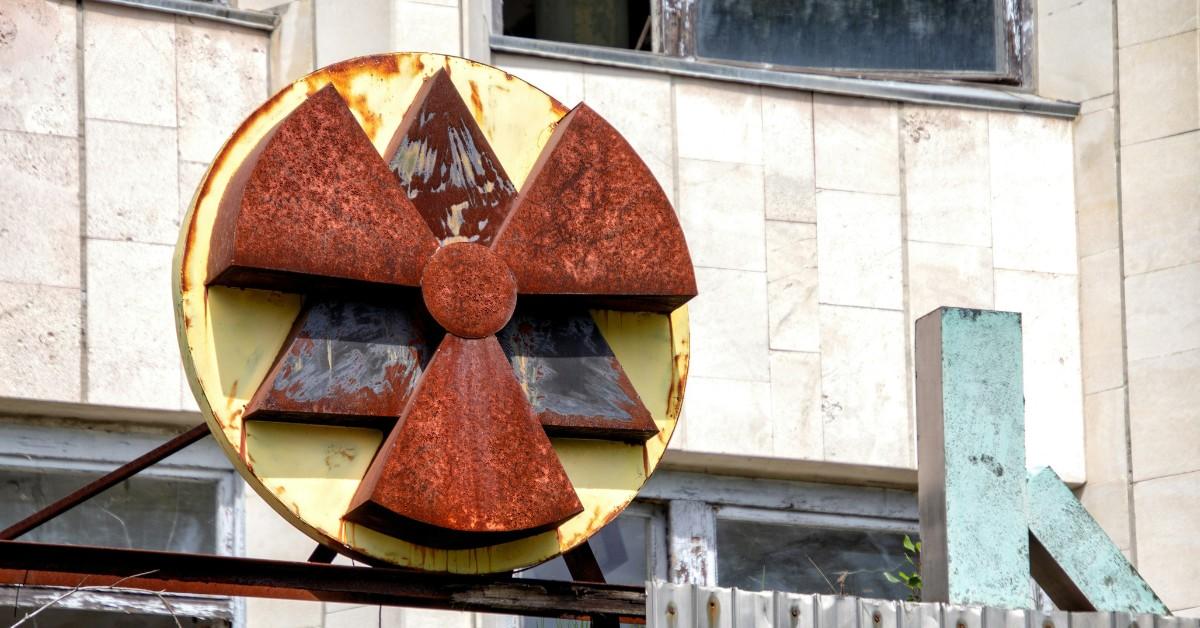What Do Chernobyl’s Black Frogs Tell Us About the Region’s Lasting Radiation?
The frogs are significantly darker than their non-Chernobyl cousins.
Published Nov. 22 2024, 3:21 p.m. ET

Chernobyl has been devoid of any human residents since a nuclear meltdown in 1986 caused radiation levels to spike to un-survivable numbers. Since then, the area has become a de facto habitat for all kinds of wildlife that filled the void where humans once reigned supreme. Scientists have identified several animal mutations in the area, including a surprising species of frog that seems immune to the toxicity around them.
This has left researchers intrigued by what they've seen, and even prompted them to wonder what it could mean for the humans who are longing to return to their homes.
Learn more about what they think the black frogs of Chernobyl mean for the future of the area, including what the information may mean on a larger scale when it comes to what experts know about how radiation impacts living things.

Why are there black frogs in Chernobyl?
According to The U.S. Sun, experts have uncovered a large population of eastern tree frogs in the nuclear exclusion zone. Unlike traditional eastern tree frogs, which have bright green skin, the majority of the Chernobyl frogs instead have black skin.
A 2022 study seems to highlight how the melanin in the skin of these frogs has somehow insulated them from some of the worse effects of the radiation that has caused major mutations and even death in other species.
The study's co-author, Dr. Germán Orizaola, wrote that the Chernobyl frogs were living as well as their green counterparts and that they did not experience any advanced aging issues as a result of the radiation exposure.
"The age structure and average age that we detected in Chernobyl is similar to that from other populations of the species in eastern Europe or the Middle East," he wrote.
It sounds like Orizaola and the other authors of the study believe that this is directly related to the frog's melanin. Additionally, the frog's survival shows potential for humans to return to Chernobyl.
"More than 90% of the radioactive material released by the accident has already decayed and disappeared from the zone," he wrote before adding that "reoccupation of most of the zone by humans should be possible at anytime."

How can wild animals live in Chernobyl but not humans?
Experts are still looking for answers regarding how animals survived in an area that was so inhospitable to life.
According to Knowable Magazine, there are plenty of theories about this, and most of them seem to do with the fact that the lifespan of animals is relatively short when compared to humans, and there's always a chance that they just aren't living long enough to see the effects of the radiation exposure.
What were the weird animal mutations in Chernobyl?
As far as interesting mutations go, The U.S. Sun notes that wild wolves in particular have developed genomes that appear to be resilient to cancer.
Knowable Magazine explains how the coloration of some bugs found in Chernobyl has changed over time, leading to insects with much darker color patterns.
There are the feral dogs likely left behind by companions who fled during the 1986 disaster. Generations of these dogs have lived and died in the disaster zone since then, and that's something that has changed their DNA, according to IFL Science.
The dogs have become so altered by their radiation exposure that experts say that it's possible to tell which dogs are from Chernobyl and which are not simply by looking at them.
While there are plenty of animals and plants that were killed off after the initial incident, it does seem like a rewilding of sorts has taken place in the decades that followed, allowing Chernobyl to become sort of a reservation for wildlife in the region.